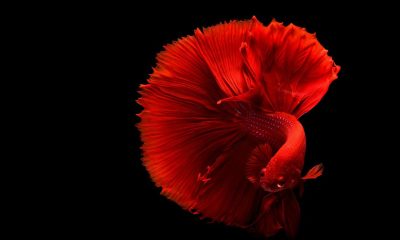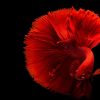Entertainment
How Is Harmony Used In Floral Design?
Harmony is an integral part of floral design, and how it is achieved is of utmost importance. Every element of the arrangement, from the colors, sizes and shapes of the flowers and leaves, must work together to create an attractive and inviting display that harmonizes with the theme of the event or business meeting. An effective floral arrangement is an essential part of creating a positive atmosphere, whether it is for a wedding ceremony, corporate reception, or other special occasion. In order to ensure a successful and beautiful result, it is important to carefully consider how each aspect of the design will work together to achieve harmony in the overall look. The flowers, foliage, and other elements should complement each other and convey the desired message of the event.
A florist’s goal when creating a wedding flower arrangement is to create something as captivating and beautiful as possible. To achieve a harmonious design, consider the colors and style of the venue and dress of the bride when selecting flowers. To create an arrangement that is as unique as the couple that day, consider implementing a few of these tips. When selecting flowers, think of the overall color palette. For a more modern look, pick a trio of colors, or a color palette of two main colors with lighter and darker shades of the same. When selecting flowers, the most important factor to keep in mind is texture. Combining different textures and forms of the same flower can create a visually appealing arrangement.
The Idea Of Harmony:
Harmony and balance are essential components of successful floral designs. They are often used interchangeably, they are not the same thing. Balance refers to the equal weight of the arrangement on either side. This helps create a sense of stability and equilibrium, making the design aesthetically pleasing. Harmony, on the other hand, is about creating a feeling of completeness and cohesion. It’s about the use of complementary colors. Shapes to ensure that all the elements of the design fit together to create a harmonious composition. To achieve this, a designer should be mindful of the overall tones and shapes of the design. As well as the size and shape of the flowers themselves.
Creating a balanced floral arrangement is an important component of floral design. Balance refers to the equal distribution of weight throughout the design, which creates a more natural and aesthetically pleasing look. To achieve balance, the designer should consider the color, size, shape, and texture of the chosen flowers. For instance, a bouquet with heavy flowers on one side, such as larger roses or carnations, and lighter flowers on the other, such as delicate orchids, would be balanced. Adding foliage as a filler can also help to even out the weight of the arrangement. It providing a beautiful backdrop for the blooms. Incorporating other elements, such as branches or berries, can also help to create a balanced floral design.

Why Harmony Is Element Of Visual Design?
Harmony is an essential element of visual design. It refers to a sense of peace and order that creates an emotional response from viewers. It is achieved by the placement of elements within a composition. Each element contributing to the composition’s overall sense of unity. A well-executed flower arrangement will have both balance and harmony. This is accomplished by carefully considering the color, size, and shape of each individual flower. How they interact with one another? Additionally, the arrangement must also be thoughtfully placed within the overall room. Landscape design to ensure that it compliments the existing elements. It does not draw unnecessary attention away from the main focus. When skillfully executed, the harmony of a flower arrangement can bring a sense of calm.
The Significance Of Harmony:
Harmony, the art of balance and contrast, has been used for centuries to create some of the most beautiful pieces of art. In the world of floral design, it is essential to understand the concept of harmony. In order to create aesthetically pleasing and visually appealing arrangements. Harmony is about creating the right balance between elements. It is about finding a way to combine colors, shapes, and textures in a way that creates a pleasing effect. When working with flowers, it is important to consider the colors, sizes, and shapes of the varieties. You choose in order to create a composition that is pleasing to the eye. Different colors and shapes can be used to create contrast. Similar colors and shapes can be used to create harmony.
Method Of Floral Design
The Wrap Around Extension Method is an extremely effective technique for arranging flowers. It utilizes harmony as its main source of creative energy. This method of floral design begins with the selection of a central flower to serve as the focal point of the arrangement. The stem of this main flower should be long enough to serve as the centerpiece of the entire design. It should be placed at the very center of the vase or container. Next, the stems of the other flowers should be bent and looped around the main stem to form a wrap-around effect, with the petals and leaves of the flowers creating a lush, full look. Once the arrangement is complete, it should be filled with foliage and other decorative materials to complete the look.

When creating a flower arrangement, you’ll need to select colors that will complement one another. The best way to do this is by using a color wheel. Begin by selecting a flower color from each side—or adjacent—colors on the wheel. This will create an arrangement that wraps around the central flower, extending outward in a line of color. When deciding which colors to use, be sure to consider the colors next to each other. This will help ensure the colors within the arrangement will create a pleasing and balanced look. Additionally, you may want to consider the colors of the flowers themselves, as well as their bloom times and shapes. With careful consideration, you can create an arrangement that is aesthetically pleasing, with colors that work well
When Creating Harmonious Layouts, What Color Styles Do You Want to Use?
When selecting colors for your floral arrangement, it is important to consider the existing colors and materials in the space. For example, if the room has neutral colors or light wood accents, a bright and vibrant bouquet may be the perfect way to bring in a pop of color. Alternatively, if the room has more bold and vibrant colors, a softer arrangement may be best. In addition to the existing colors, the occasion should also be taken into account when selecting the color scheme. For celebratory occasions, bright and cheerful colors are often best, while more muted colors may work better for more formal occasions. Regardless of the color or design you decide on, flowers are an excellent way of bringing color and life into your home or office space.
A wrap around extension method floral design is a beautiful way to add a touch of elegance to any floral arrangement. This type of design involves surrounding the bouquet with multiple layers of petals, foliage, and flowers, creating a stunningly beautiful effect. This style of bouquet is perfect for more formal occasions such as weddings and showers, and can be the perfect addition to any celebration. The wrap around design adds a unique and eye-catching element to the arrangement, sure to be admired by all. With this type of design, you can be sure that your floral arrangement will be a standout piece and help to make your special event memorable.
How To Create The Floral Display?
Creating the perfect floral display is easy, and with the right materials, you can be sure to achieve the desired look. Start by selecting the flowers of your choice, such as roses or tulips, which can be arranged in any manner you prefer. Next, fill a suitable container or vase, such as a mason jar or ceramic bowl, with water. Once this is done, begin adding the flowers one by one, placing them evenly throughout the container. As you proceed, ensure that the flowers are securely placed and that the stems are not too close together. To finish off the look, consider adding some foliage to fill in any gaps and to give the floral display some extra texture and color. With a few simple steps, you.

Various Floral Design Elements:
Floral design is an art form that can be divided into three main categories: Nature Inspired, Traditional, and Contemporary. The Nature Inspired category involves creating designs that reflect the natural world around us. This could include the use of real flowers, leaves, fruits, vegetables, and other natural objects. Nature inspired floral design also includes the use of natural textures, colors, and shapes. Traditional floral design is often characterized by classic, timeless styles and elegant arrangements. These designs often rely on symmetry and repetition to create a beautiful focal point. Contemporary floral design, on the other hand, is more modern and creative. These designs are often bold and creative, incorporating unique materials and forms. They often use the latest trends in colors and textures to create something.
One way to create a cascading floral effect is by using a technique known as ‘stem wrapping’, which involves wrapping a flower around a stem as opposed to using wire or pins. This is a great option for those wanting to create an even more natural look. It is also a great way to keep the flower in place and reduce the risk of it coming loose. To achieve this look, you can use live plants or artificial plants with silk flowers. When using live plants, make sure to wrap the stem in a thin layer of floral tape and then carefully wrap the flower around the stem. This way, the flower will stay in place and the stem will remain strong and secure. When using silk flowers, be sure to secure.
Various Flowers In Vases Of Different Types
If you are looking for a way to create balance and symmetry with your flowers, the wrap around extension method is an ideal choice. This technique utilizes multiple vases of varying sizes and creates an eye-catching floral design by wrapping the vases together. The design is further enhanced with an extension type of floral arrangement. When done correctly, this technique results in a beautiful and dynamic display that is sure to impress. It is a great option for any occasion and is a great way to create a unique and creative look. To ensure the best results, it is important to use the right type of flowers, greenery, and other materials, as well as properly positioning the vases and arranging the flowers to create the desired look.
The Fundamentals Of Floral Design:
Creating a stunning floral display requires knowledge of the fundamentals of floral design. As a florist, understanding the five basic principles of floral design is essential in crafting a beautiful and eye-catching arrangement. These principles include Balance, Contrast, Focal Point, Repetition, and Harmonious Color Scheme. Balance is necessary to ensure that a design is not overly weighted on one side or the other. Contrast creates visual interest within an arrangement by introducing different types of flowers, sizes, or textures. The Focal Point is the point of emphasis that draws the viewer’s eye and creates the overall look and feel of the design. Repetition is an artistic technique used to create cohesion and flow by repeating certain elements such as color.
Stability and balance are the essential first principles of any flower arrangement. To ensure the arrangement remains upright and balanced, one of the most effective solutions is the wrapping around or branch out extension methods. These methods help to stabilize heavier branches while also adding height, allowing for a more aesthetically pleasing and well-rounded display. Furthermore, this stability of the branches also helps to reduce the risk of the arrangement becoming unbalanced, thus reducing the need for regular maintenance and rearranging.

How To Pick The Perfect Floral
Arrangement
Contrary to popular belief, not all floral arrangements are the same. In fact, there is a wide variety of arrangements and each one has its own specific purpose. Some arrangements are designed to bring joy and cheer to the recipient. Others may be used to commemorate a special event or honor the life of a person. The types of arrangements range from small, intimate bouquets to large and elaborate centerpieces. The types of flowers and colors used vary in each arrangement and can be selected to fit the occasion or the desired sentiment. No matter the type, floral arrangements always bring beauty and delight to any occasion.
Beauty:
The beauty of flowers lies not only in their vibrant colors and delicate shapes, but also in the way they are arranged. This artful arrangement of flowers is known as floral design, and has been studied, appreciated and celebrated for centuries. The application of floral design can be seen in many forms, such as bouquets, table arrangements, wreaths and more. Floral design is an art form that incorporates the thoughtful placement of flowers to achieve a beautiful, harmonious look. It requires careful consideration of the available components, such as color, texture and shape, to create a work that is aesthetically pleasing and balanced. Furthermore, the principles and techniques of design are not confined to floral arrangements alone, as they can be applied to other.
Creating A Harmonious Space: Some Advice
Creating a harmonious space that brings balance and tranquility to your home or office can be achieved using the wrap around extension method. This method focuses on creating a cohesive flow throughout the space, by using similar elements from room to room. To create this, you can start with a single piece of furniture, such as a sofa, and then add complementary pieces in the same style throughout the space. This will give the room a unified look, without it seeming overly cluttered or mismatched. You can also use similar colors and textures throughout the space, to bring an additional layer of harmony. Additionally, incorporating natural elements and organic materials, like wood and stone, can help create a calming atmosphere and bring a sense of unity.
Conclusion
Flowers may be a lovely addition to a wedding’s decor. The number, color, and shape of flowers can all have significance for a wedding. This might need to be taken into account when planning. Explore this web blog if you’re looking for more information on flowers and how to use them in your design. Here, you’ll discover a fantastic resource on the use of harmony in floral design, complete with advice for DIY brides as well as florists. This website has it everything, from understanding what kinds of flowers would go best with certain colors to useful guidance on price ranges and where to shop. For individuals who want to learn more about floral design approaches using the wrap-around extension method, it even includes tutorials.
Frequently Asked Questions
What is Harmony?
Harmony refers to a blending of all components of the design. The combination of a simultaneously sounded musical notes that is to produce a pleasing effect.
What is floral design?
Florat design is the way of making an eye-catching view with the help of flowering plan and flowers. It is an art and expert can utilize the resources in an excellent way.


















